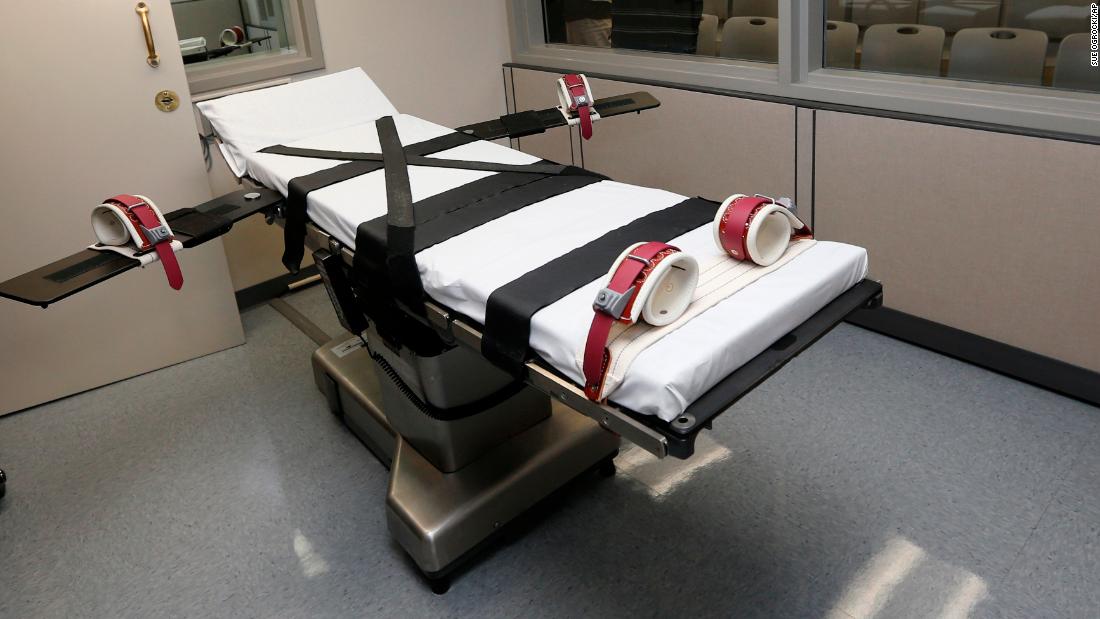
“It’s just yet one more reckless move by Oklahoma,” Deborah Denno, a Fordham University law professor, told CNN of the state’s scheduled execution timetable, which she said is in line with its staunch, decadeslong record of capital punishment. “If there was going to be any state that was going to do something so obviously irresponsible and unjust … it would be the state of Oklahoma, given the history.”
“The family members of these loved ones have waited decades for justice,” Oklahoma Attorney General John O’Connor said, referring to the families of the condemned men’s victims, in a July 1 statement as the executions dates were set. “They are courageous and inspiring in their continued expressions of love for the ones they lost.
“My office stands beside them as they take this next step in the journey that the murderers forced upon them,” he said.
“Oklahomans overwhelmingly voted in 2016 to preserve the death penalty as a consequence for the most heinous murders,” the attorney general said. “I’m certain that justice and safety for all of us drove that vote.”
And carrying out a series of death sentences in quick succession could raise the chances of a botched execution, experts said.
“When a state or the federal government makes a commitment to execute people in bulk, to do it over a period of time in a way that doesn’t give it a lot of time to adjust to errors and problems, that political momentum is often hard to resist,” Sarat told CNN. It can encourage “a kind of carelessness … and Oklahoma is not a national model of scrupulousness in the world of lethal injection.”
“I think that the problems that were present when Lockett was executed remain present in Oklahoma today,” said Sarat, a professor of law and politics at Amherst College. “And the Grant execution is a testimony to that fact.”
Pointing to Lockett’s and Warner’s executions, a number of the inmates now slated for execution sued corrections officials in federal court, claiming in part that Oklahoma’s three-drug lethal injection protocol was unconstitutional. Midazolam, one of the drugs used in the protocol, would not render them adequately unconscious, they argued in part, and could put them at risk of severe pain as they died, violating their Eighth Amendment protection against “cruel and unusual punishments.”
The inmates’ attorneys responded with claims the judge had ignored “the overwhelming evidence presented at trial that Oklahoma’s execution protocol … creates an unacceptable risk that prisoners will experience severe pain and suffering.”
Oklahoma’s attorney general later that month requested the execution dates.
A history of troubled executions
As a result, states have scrambled to find alternatives they can reliably obtain, resulting in what Denno described as a “constant experimentation with drugs.”
Warner was executed the following January. But months later, officials aborted an attempt to execute Glossip after they procured the wrong drug for his execution: potassium acetate instead of potassium chloride, the drug used to stop an inmate’s heart approved by the state’s protocol. Then it emerged officials had, in fact, used that drug to put Warner to death.
‘Oklahoma is swimming upstream against the tide’
“Oklahoma is swimming upstream against the tide across the country,” he said, “in which the death penalty is waning and in which the death penalty is increasingly discredited.”
Taken together, Oklahoma is a “state that will do anything to keep executions going, including trying to execute 25 people between August of 2022 and December of 2024,” she said. “It’s just one more chip in a state that stands out, perversely, really, in its efforts to engage in reckless adoptions” of execution methods and drugs.
“There’s no question” that an execution spree would “enormously increase the risk” of a botched execution, Denno said. “How could they ever improve upon that with this many executions? It’s just going to be worse.”
